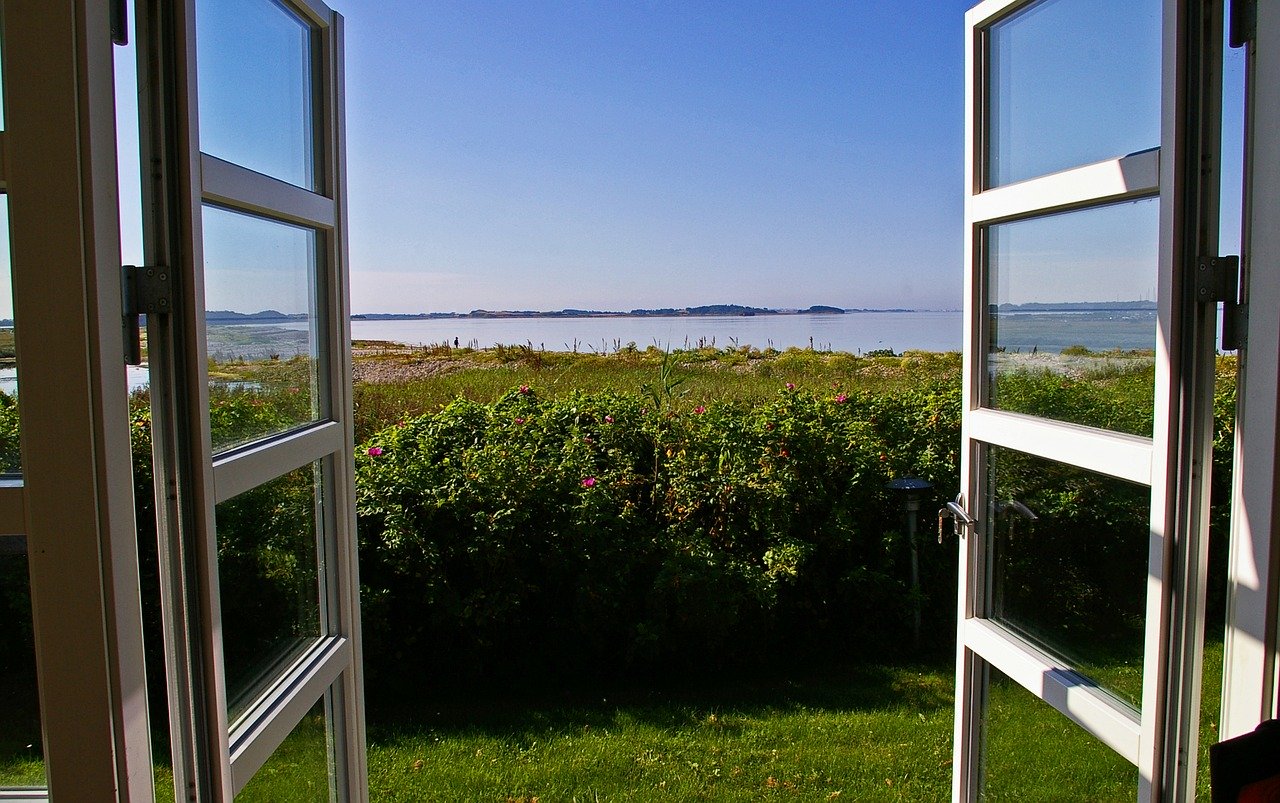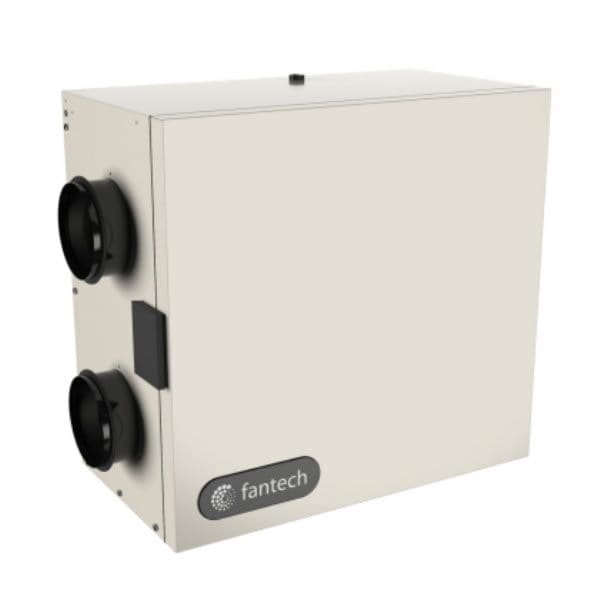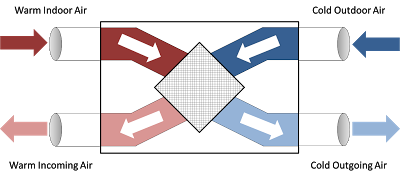
Energy and Heat Recovery Ventilation
 Many find it unpleasant to breathe in frigid air after running on a cold day. You can almost hear your grandmother's warnings about catching pneumonia. If only there was some way to preheat the air before it entered your lungs.
Many find it unpleasant to breathe in frigid air after running on a cold day. You can almost hear your grandmother's warnings about catching pneumonia. If only there was some way to preheat the air before it entered your lungs.
Same goes for ventilating in your home. If you're heating during winter but bringing in cold, outdoor air via an open window or air exchanger, you're wasting a ton of energy and reducing comfort. The same applies to bringing in hot, summer air into an air-conditioned home.
The solution is to get ventilation with heat recovery, or an HRV system. If you also care about maintaining humidity levels, than an energy ventilation recovery system, or ERV, is for you.
What is Heat Recovery Ventilation?
 At a basic level, the purpose of an HRV is to provide fresh, outdoor air while helping preserve the indoor air temperature. It's an energy efficient air exchanger that removes stale air and adds fresh air to your home.
At a basic level, the purpose of an HRV is to provide fresh, outdoor air while helping preserve the indoor air temperature. It's an energy efficient air exchanger that removes stale air and adds fresh air to your home.
During winter, the warm indoor air preheats the cold air coming in from outside. With the incoming air now much warmer than it began, you will use much less energy conditioning it. During the summer, the process reverses. Cold outgoing air absorbs heat from the incoming, hot air, cooling it, and reducing the cost of cooling your home to a comfortable level.
How Does Heat Recovery Ventilation Work?
Physics teaches us that when two substances with two different temperatures meet, energy (i.e. heat) is transferred from the high temperature substance to the low temperature substance.
The transfer of energy is never complete, but if given enough time, heat will be transferred to the lower temperature substance until the two have equal temperatures (think about mixing one cup of hot water and one cup of cold water to make two cups of warm water).
In HRVs, two sources of air are brought into the system with different initial temperatures.

The HRV has a heat exchanger inside, usually made of aluminum, which allows indoor and outdoor air to pass through without actually touching each other. This helps to prevent any cross-contamination between the stale indoor air and fresh outdoor air. Small channels in the heat exchanger allow the air to spread across a larger surface area, which quickens heat transfer. Two blowers distribute the fresh air throughout the house and exhaust the stale air outside. Filters ensure you are not introducing any unwanted contaminants from outdoors.
Energy Ventilation Recovery Systems
Although HRVs are ideal for maintaining temperature and efficiency, they have one drawback: maintaining humidity levels.
The right balance of home humidity can be beneficial for your health. Unfortunately, an HRV does not account for moisture. Incoming cold air quickly dries out your home during winter while incoming humid air can make things sticky in summer.
 ERV systems are designed not only to maintain temperature, like an HRV, but also humidity levels. An ERV heat exchanger is usually made of a different material, often paper, so that moisture can transfer between incoming and outgoing air while still preventing cross-contamination of air streams.
ERV systems are designed not only to maintain temperature, like an HRV, but also humidity levels. An ERV heat exchanger is usually made of a different material, often paper, so that moisture can transfer between incoming and outgoing air while still preventing cross-contamination of air streams.
Like temperature, moisture in the air will also move from an area of high concentration to an area of low concentration. This means that if you use an ERV in the winter, your warm and humid outgoing air will transfer both heat and moisture into the cold and typically dry incoming air.
This doesn't mean you should throw away your humidifier, but it can certainly make you more comfortable and decrease the load on the humidifier you are currently using. In the summer, the ERV will work as a dehumidifier, since the exchanging process is reversed. This can help prevent your home from having too much moisture in the air, which can cause issues such as mold and mildew growth.
How to Size HRVs/ERVs
HRV and ERV units are typically sized to ventilate at 0.35 air changes per hour. To calculate the amount of cfm you need, take the square footage of the space you want to ventilate and multiply by the ceiling height to get cubic volume. Then, multiply the cubic volume by 0.35 and divide the result by 60.
For example, suppose you want to ventilate an area that is 1,100 square feet with an 8-foot ceiling. Multiplying the square footage by the ceiling height gives you 8,800 cubic feet.
Next, multiply your cubic volume by 0.35 and divide the result by 60. So, [(8,800*0.35)/60. The result is 51 cfm. This is a general formula to give you a rough idea. Always consult your local code for sizing requirements in your area and get a professional opinion.
ERVs vs. HRVs
Choosing between an ERV and HRV can largely come down to where you live and your desired comfort level.
Cold, dry climates don't require the moisture transfer that an ERV provides because there is seldom a threat of hot, humid air getting in your house. However, if you regularly use a humidifier in a cold climate and want to keep it running efficiently, then an ERV can still be helpful. Humid climates, on the other hand, benefit the most from an ERV, especially during summer when that sticky air wants to get in. In fact, if you live in such a climate, you should generally choose an ERV over an HRV.
While both ERVs and HRVs can be expensive to install, they have incredibly low maintenance and operating costs. Because ERVs and HRVs are mostly passive devices that only use energy to circulate air, they are very efficient and often generate far more in energy savings than what is needed to operate them.
How beneficial either one is, though, will also depend on the type of building you would like to ventilate, and the method of installation. Due to the complexity of the decision, it's best to contact our experts so we can help you determine the right solution.

